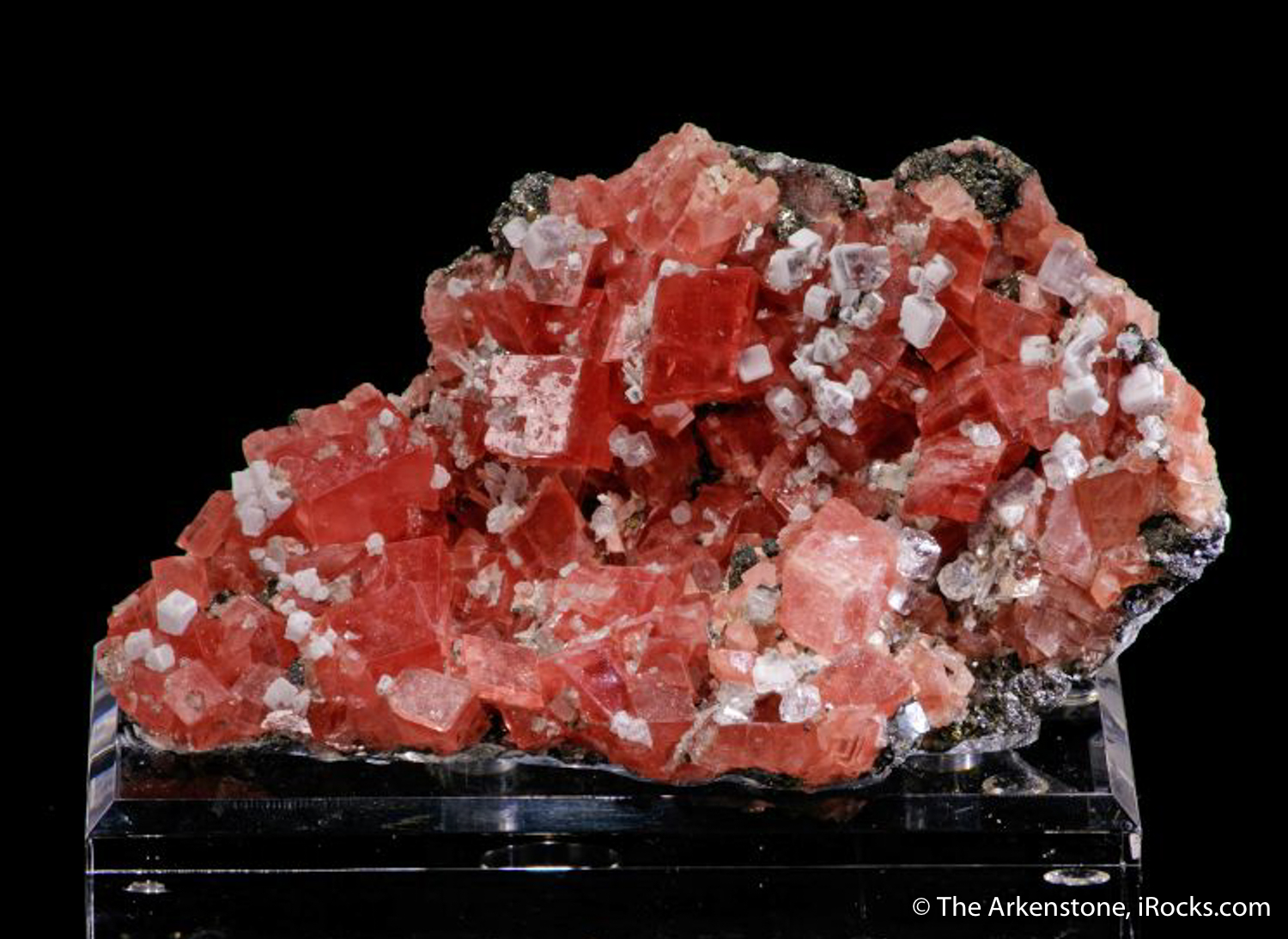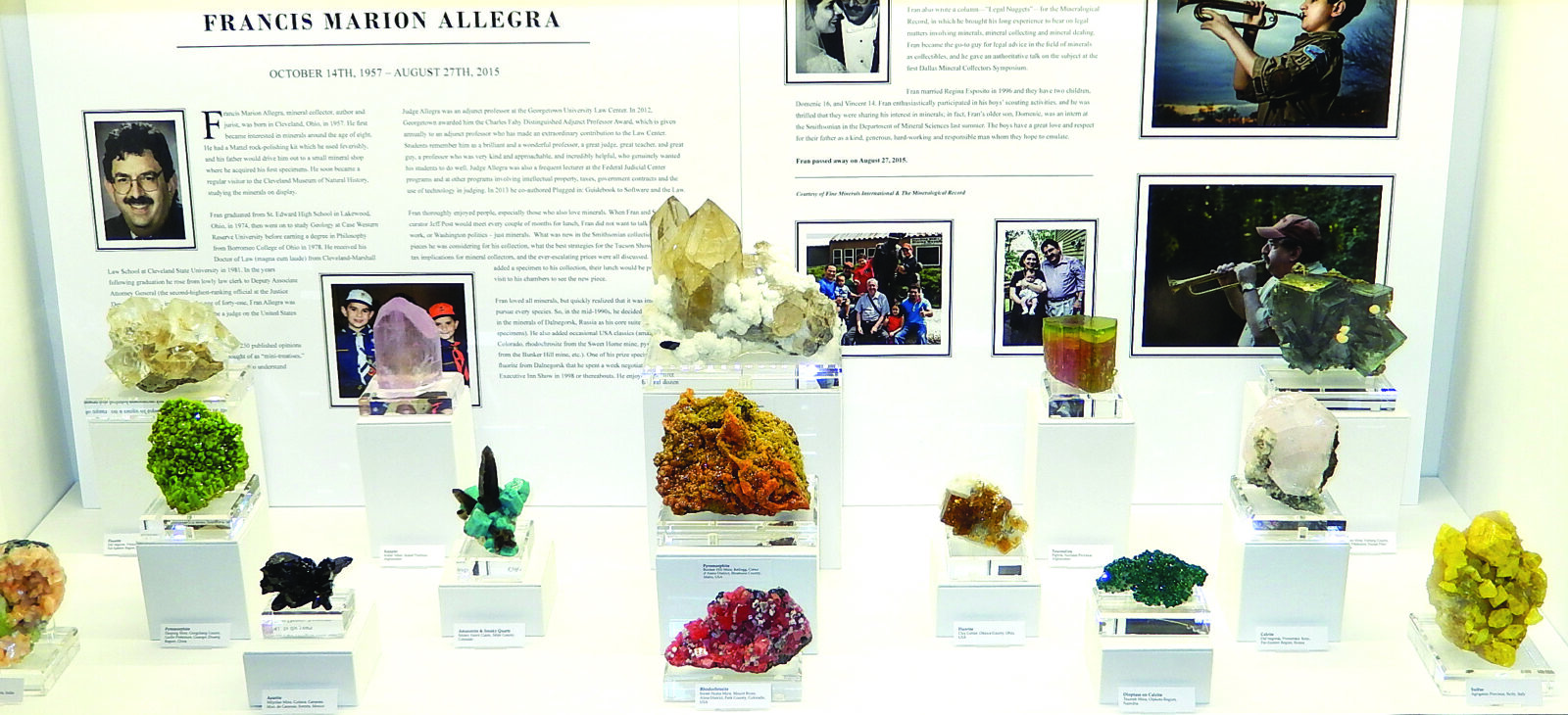Legal Nuggets: Fragile Minerals and the TSA

Adapted with permission from the Mineralogical Record, Vol. 39, No. 2 March – April 2008, for publication on iRocks.com.
Francis M. Allegra
Judge, United States Court of Federal Claims
Adjunct Professor, Georgetown University Law Center
Seven essays were published in the Mineralogical Record magazine by the late Judge Francis Allegra on legal matters of interest to mineral collectors between 2008 and 2012. This is the first in his series. © 2008 The Mineralogical Record, Inc.
Crocoite, scolecite, mesolite, cerussite—such specimens and other fragile delicacies are highly desired by avid mineral collectors. Yet, they strike fear in the hearts of the stoutest among us when we contemplate how to get them home intact. We have all come across a superb specimen, attractively priced, but have nonetheless refrained because there was no easy way to get it home damage-free.
What if, however, you do decide to take that specimen home with you on a plane? And what if you carefully wrap it and loosely seal it in a box, with the intent of treating it as carry-on luggage? Of course, from the moment you embark on this course, your mind is dwelling on one thought, and one thought alone—those folks you will encounter at the airport with the badges and patches that say “Transportation Security Administration” or “TSA.” And, in your darkest moments, perhaps you wonder what would happen if those friendly TSA folks accidentally gouged a hole smack in the middle of your prized crocoite. It has happened to people before, and it can happen again.

Of course, in the law, as in other walks of life, avoidance of a problem is often the best course. In this regard, the TSA website (www.tsa.gov) provides some helpful advice. It states that “[i]f you are carrying valuable items . . . we recommend that you ask Security Officers to screen you and your carry-on luggage in private,” adding that this process may be initiated by contacting the TSA screening supervisor. Using this procedure also probably lessens the likelihood that a TSA security officer will view your specimen as a dangerous “projectile” that cannot be taken on the plane. By the way, the TSA website also contains a detailed list of prohibited carry-on items.
Perish the thought, but what if your specimen, in fact, is damaged during the inspection process? At this point, you will discover that pursuing a monetary claim against the United States Government is not quite like pursuing one against the corner grocer. The reason is that the United States is protected from lawsuits except to the extent that Congress consents for it to be sued. That doctrine, known in the law as “sovereign immunity,” dates back to the English monarchy. Yet, despite its monarchial roots, the doctrine was viewed as so well-established by the Founding Fathers as not to be debated, even for a moment, at the Constitutional Convention.
But, all is not lost. There is, in fact, a statute that potentially waives the sovereign immunity of the United States in a case involving your negligently damaged mineral specimen. It is the Federal Torts Claims Act (found in various provisions of Title 28 of the U.S. Code), a law with an interesting history. This statute was passed in 1946, approximately a year after a B-25 “Mitchell” bomber—the type of twin-engine plane used for the Doolittle raid on Tokyo—got lost in a blinding fog and crashed into the Empire State Building, 915 feet above street level, killing and injuring a number of individuals. Responding to this disaster, Congress passed a statute generally making the United States liable “for injury or loss of property” that is “caused by the negligent or wrongful act or omission of any employee of the Government,” where “the United States, if a private person, would be liable to the claimant in accordance with the law of the place where the act or omission occurred.”
So, what does this law mean? Under the statute, the United States is generally liable for the negligent acts of its employees to the same extent that a private person would be liable for those same acts under the law of the State in which the negligence occurred. So, if you are in the airport in Tucson, it is Arizona law that will preliminarily control whether the government is liable for negligence in gouging your crocoite.
Of course, nothing in the law, particularly when you are dealing with the United States, is that simple. For one thing, to recover under this statute, you have to file a written claim with the TSA, stating the circumstances of your loss and the exact amount you are claiming. And you must file this claim within two years of the incident. A copy of the claim form is available on the TSA website. Pay careful attention to the filing instructions, particularly the requirement that you claim a sum certain—that is, a specific dollar amount. With very limited exceptions, the figure you list on the form represents the maximum amount you can recover under the law, even if you are forced to pursue the matter in litigation. For this and other reasons, if your claim is going to be substantial, you may want to consult an attorney well-versed in the Federal Tort Claims Act to make sure that your claim is filed correctly. Mess up this preliminary step and you may later find, to your horror and chagrin, that you cannot recover at all.
The TSA has a Claims Management Office that processes these claims. The hope (and the reason why Congress established the claim procedure) is that this agency will either grant your claim or negotiate a reasonable settlement. If, however, TSA denies your claim or does not decide your claim within six months, then you have the right to file suit against the United States in the U.S. District Court for the district in which you live. If you get to this point, you should definitely consider hiring an attorney, as the United States will be defended in that lawsuit by attorneys from the U.S. Department of Justice that specialize in handling tort cases.

There are a variety of other statutory twists and turns that might affect your ability to recover here. For one thing, it is possible that the Justice Department will argue that the TSA’s actions are covered by a statutory exception to the Federal Tort Claims Act, perhaps the one that exempts from coverage claims arising from the detention of goods by a law-enforcement officer. However, a “Dear Traveler” message posted on the TSA website from the Director of the TSA’s Claims Management Office appears to admit that the agency is responsible if loss or damage to your property is directly caused by the negligence of a TSA employee. (The lawyers among you might want to read Kosak v. United States, 465 U.S. 848 (1984), in which the Supreme Court held that the U.S. Customs Service could be liable for damaging artworks.) Remember also that your recovery may be affected by nuances in the law of the state in which the negligence occurred (in our example above, Arizona). Finally, recognize that the Federal Tort Claims Act does not allow for the recovery of certain types of damages, among them punitive damages and pre-judgment interest on the amount of your loss. So do not expect a bonanza at the government’s expense.
The bottom line is that Congress has created a potential legal path for you to recover damages against the United States if, despite your best efforts to avoid the problem, the TSA folks convert your cabinet specimen into hundreds of micromounts. Happy flying.
________________________________________________________________________
NOTE: This column is for educational purposes only and is not legal advice, or a substitute for such advice. Readers who have questions on this topic should consult with a qualified lawyer.
________________________________________________________________________